|
Part
2
continued from
previous page
Robert Silverstein:
RS
Steve Hackett: SH
RS: Your
1999 studio album Darktown is one of your great albums. You describe
it almost like a musical exorcism.
 SH:
It’s a fairly haunted kind of record that one. Certain things that
I felt I couldn’t quite get out of my system. My schooling, my
early experiences with my first love, first time I fell in love with
a girl who later became heavily involved with drugs. I got to thinking
about both these things and I found that, alot of the time I would be
casting around for ideas for songs, looking in books, looking in the
newspaper and trying to come up with glib one-liners and what have you
and trying to stitch a whole bunch of one liners together into a song.
And that’s one way of working. That idea of sampling other phrases
other people said. But then there’s another way of working which
is to look at your own experiences, some of which have been too painful
to include in a song. SH:
It’s a fairly haunted kind of record that one. Certain things that
I felt I couldn’t quite get out of my system. My schooling, my
early experiences with my first love, first time I fell in love with
a girl who later became heavily involved with drugs. I got to thinking
about both these things and I found that, alot of the time I would be
casting around for ideas for songs, looking in books, looking in the
newspaper and trying to come up with glib one-liners and what have you
and trying to stitch a whole bunch of one liners together into a song.
And that’s one way of working. That idea of sampling other phrases
other people said. But then there’s another way of working which
is to look at your own experiences, some of which have been too painful
to include in a song.
RS: Among the Darktown instrumentals on there “Twice Around
The Sun” is totally brilliant. You also say that song has possibly
the longest sustained guitar sound ever. (laughter)
SH: That’s
right, possibly. There’s a long held note at the end which runs
through all of the chord changes. I think the chord changes, when I
tried to come up with them at first, were designed with that in mind
from the word go. That the playout would have the idea of a note that
would run throughout the whole thing. It’s a trick I’ve employed
before. I’ve often ended a solo on a sustained guitar note. The
last thing that you hear is a very long sustained note. That also happens
on “Rise Again”. There’s a long sustained note at the
end of it. But that one was taken to the mountains as they say. Taking
it to the mountains, in my book, means a long, slow deliberate fade
out.
RS: The song “Darktown Riot” features what you call some ‘Mellotron
plundering’. It’s starts off really funny too. Does it represent
the funnier, lighter side of Darktown?
SH: Yes, it’s funny and cartoon-y. It featured the same theme that
was in the “Darktown” song, but done in a more, kind of...it’s
more of a kind of “Ghost Train” setting somehow. It’s
more toylike, I think in a way and the fact that you’ve got the
guitar line tremelo-ing through all of it, the sustained note, that’s
shaky from the word go. So it’s kind of a parody of the guitar
sound. And then we’ve got ‘marcato’ stings providing
the bass line, marcato cellos really, and mellotron right in the middle
doubling the melody line. So really there aren’t chords as such.
It’s just a top line and a bass note and it seems as if all the
areas are filled in with a chord, but in fact there is space in it.
And the drums were also very...this guy called Roger King, that I engineered
alot of the album with, he engineered the album and did program on it,
works in the band that I play with at the moment. Roger did an album
called Beats In The Hood and it was an album where you would
sample things. The idea was you’d be able to sample from this thing
and he gave me a copy of it and I loved the stuff. And so we included,
on that track, quite a few ideas that he’d put together on that
sample album. We reworked them to some degree, went back to some of
the original elements, like the prepared piano stuff right at the end
of “Darktown Riot”. Some of the stranger sounds. I think rhythmically,
that really worked well, that track. It’s such an over the top
drum sound and there’s so much going on. And also, there’s
a sound that sounds like a car alarm is going off (laughter) and is
actually the sound of the guitar sampled and played back through a harmonizer
on one of those Zoom units I’ve got. The impression of the voice,
the one that goes ‘yeah’, at the beginning, is just a guitar
sound. There’s no voice box involved with it. It’s just a
preset guitar sound but using the tremelo arm. Then we reversed it so
it went ‘yeah’. So the talking guitar is purely done with
tones not with any use of a voicebox. And then at one point you hear
the same rhythmic pattern, but the EQ is severely altered so all the
bottom is taken away and it sounds like someone has just stolen the
speakers and all you were left with...like there was a riot and things
were taken away and all you had were just the tweeters to try to carry
the sound. So that is probably subliminally why I called it “Darktown
Riot”.
RS: Your new live box set Live Archive: 70.80.90’s is quite
impressive as well. Could you say something about how the Live Archive
box set came about?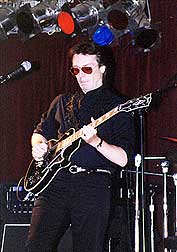
SH: Well I had the stuff around for a long time. It was in some ways
in response to what fans had asked for. They’d asked for the occasional
concert which was heard in it’s entirety without any editing. The
whole damn thing. And so I had to listen to many, many concerts. It
was Billy (Budis), my manager who came up with the idea of doing a personal
box set. We’d been involved with the Genesis box set at that point,
all following in the wake of The Beatles’ various box sets of course.
It really combined the idea of three separate band line-ups and three
separate eras, the ‘70s, ‘80s and the ‘90s and an attempt
at a crosssection of material through that time.
RS: Disc four, the ‘90s CD on the Live Archive box features
“Sierra Quemada” which was the lead-off track from your ‘93
CD Guitar Noir. That’s a favorite of mine.
SH: If
there’s such a thing as ‘golden tone’, and I know I used
the word on Darktown, it’s because the guitar, when it’s
working at it’s best, really does seem to reflect the colors of
silver and gold. When it’s got some kind of either reverb or echo
on it, it just hits it dead right and it seems to soar and fly. This
sound that I’m known for, I didn’t really invent it, other
people had the sound before I did, but I exploited it because it was
such a wonderful thing and it would just appear on other people’s
albums. Just very occasionally you’d get a little bit of echo (and
I’d say) ‘Hang on a minute! I really like that. Let’s
have a whole album of that!’ (laugher) So that was where I came
in.
RS: Could you mention a few of your all time favorite electric guitars
you keep or have kept over the years?
SH: Okay well, the favorite still has to be the Les Paul, Gold Top Les
Paul. Not so much what I’ve done with that guitar, but what I’ve
heard others do with it. Well hell...Eric Clapton, Peter Green, Jeff
Beck alone had fantastic things with that instrument. So that’s
wonderful in itself. That little guitar, but makes such a big sound.
RS: Do you remember your first guitar?
SH: You know, I don’t. The first electric guitar I don’t remember
the make of. I remember it was Japanese. But, it was pretty dismal.
But I remember the first acoustic I had. My father’s guitar in
fact was a Kay F cello guitar, which I think may have been a Canadian
make. A Kay guitar. But more recently I’ve been playing a Fernandes
guitars in the shape of Les Pauls with the sustainer pickup and full
reverse tremelo arms on them.
RS: Was the Les Paul gold top featured on those great Genesis albums?
SH: Yes it was, yeah. I think it was the guitar that was heard more
than any others on the early Genesis stuff.
RS: What about classical and other acoustic guitars?
SH: I use a make called K.Yairi. They make wonderful guitars and I’m
still working with them. I’ve got a favorite that I bought in 1973.
First time I bought that and I sat down and started playing that in
a group rehearsal, it might have been ‘74 actually just while we
were rehearsing The Lamb Lies Down On Broadway. Pete Gabriel
walked in the room and he said, ‘whenever I hear guitar played
like that I always think of beautiful ladies’. So, (laughter) here
I am, still making the sound of beautiful ladies. I have this phrase.
There was a track at one point which is unreleased called “The
Guitar Is A Woman”. And I’ve never released it because at
the end of the day I never thought it was that strong a track. But there’s
something about it that I think is inherently true.
RS: I was reading that you’re working on a new guitar concerto
and another ‘modern’ album.
SH: Yeah, that’s right. An album that features electric guitar
and another album which features nylon guitar and orchestra so they’re
two separate things. One would be songs plus instrumentals. One would
attempt to do the earth and the other one would attempt to do heaven
of course.
RS: The Sketches Of Satie CD from 2000 - made with your brother
John, was another winner. What is it about Erik Satie’s music that
continues to make it a favorite with guitarists today?
SH: I know it’s certainly a favorite with flute players! Whether
it’s a favorite with guitarists, I don’t know, but somebody
said to me that John Williams had done a version of one of the Gymnopédies,
if not all of them. But then I suspect he would tend to play it faster
then I would. So the speed I play that stuff is not really suitable
for guitar taking the top line, not acoustic, because the notes just
don’t last long enough. There’s something about the simplicity
of Satie’s work, the quirkiness of it, the humoresque attitude
of it, or humoresque atmosphere perhaps. Well there’s a kind of
wistfulness in it and an aspect of whimsy that tells you these things
were started as little personal ideas that became great big ones.
RS: Do you want to do soundtracks?
SH: Yeah, I’d love to sure. I did a soundtrack for a documentary
based on a holocaust survivor called Outwitting Hitler which
was about this guy who managed to survive by forging Nazi documents
in the war and traveled freely throughout the third Reich just because
he had the balls and the skill to forge documents. He said that the
Nazi’s, although they were ferocious, were terrified people themselves
and they were great bureaucrats. If they saw something with a stamp
on it, they’d click their heels and let you through. Anyway, so
I did the music for a film called Outwitting Hitler. The soundtrack
of that may be available someplace, but it was a documentary. It got
very good reviews which I’m pleased to say.
RS: You made a great blues album back in the ‘90s Blues With
A Feeling. What role does the sound of the Blues play in your music?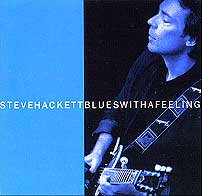
SH: Well
I grew up listening to alot of that stuff and there seemed to be so
much anger in it and it was a fantastically expressive medium for the
guitar and for the harmonica—two instruments which I already played
to some degree. So, in many ways it was the way I found...early guitar
lessons. Good things to practice with the guitar. And you could get
up to a degree on proficiency just playing blues. You’d learn eventually
how to control a string and to get many different sounds out of one
note. Finger vibrato was something that interested me greatly. I must
be one of the few people who do free standing finger vibratos without
the support of the thumb. That’s because I had an accident many
years ago. I lost the use of a tendon and a nerve in my thumb. This
little bit (point out on his hand) here that connects the thumb and
the fingers. And so it actually means that my left hand is weakened.
And many years earlier I’d seen Eric Clapton do finger vibratos
where, if he wasn’t bending the string, he wasn’t supporting
it with the thumb. He was just pulling up and down on the string. First
night I saw him doing that, 1966 or ‘67 whenever Cream were first
formed, I saw them in a club in London, in Brixton, called The Ram Jam
Club. And that night I went home, played it and got it right off and
that was wonderful. But then I wondered if the same technique could
be applied to bending the string up. Much more difficult because the
stress the string really relies on the support from the thumb. However,
I have developed a technique, which is not worth patenting because you
couldn’t, but I could describe this to people. If you are using
a tremelo arm with a floating bridge and you want to bend up and get
the same kind of tremelo sound that Paul Kossoff got on “All Right
Now”, which is fantastically fast tremelo but relatively wide,
the best way to do it, if you’re not very strong, is to bend the
strings up with, usually in my case it’s...I’ve tried for
years doing three fingered vibrato, a violin technique, but I tend to
use my middle finger and my third finger and bend up. But then I also
I also use the edge of my right hand to bend up the bridge as well so
I’m sharpening the floating bridge by sometimes as much as a semi-tone,
so I’m only bending up with this hand about a semi-tone. So it’s
somewhere between two. So it’s taking the stress off this hand
and that way you can also play the string very, very close to the bridge
so you’re getting a very trebly sound. Getting the string at it’s
most trebly and it makes for a fantastic finger vibrato and it’s
taken me years to figure this one out. But I would love to show it to
people because it’s a really great, great sound.
RS: I want to get some opinions from you about some well known guitarists.
Could you just say a line or two about each, sort of the first thing
that pops into your head. Steve Howe.
SH: Steve’s a great player. Phenomenal things in the rehearsal
room. Phenomenal work with early Yes. He’s a great player.
RS: Robert Fripp.
SH: He’s a great player and a very eloquent spokesman for his unique
approach towards music.
RS: Mike Oldfield.
SH: I think of Mike as an all around-er. I think of him as a musician...guitar
is one of the things he does. (Steve’s manager Billy Budis enters
the room) I loved his early work with his sister called Sally Angie.
RS: Hank Marvin.
SH: Hank Marvin... Came up with wonderful melodic lines in the early
days. The first electric guitar record I ever bought was “Man Of
Mystery” by The Shadows and it even had a psychedelic bit in the
middle where he went, in those days, completely bananas! At one time
I thought, ‘oh that sounds a little bit too wild, what’s happened
there? Your not playing the straight notes.’ But then again I was
probably only about ten years old or something.
RS: Jan Akkerman.
SH: Great player. Moving Waves, great album. Lovely work on electric
and on acoustic.
SH: George Harrison.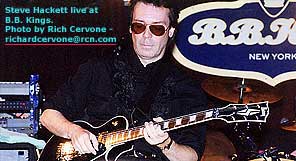
RS: I think that George Harrison was a wonderful songwriter. I can’t
separate out, these days, a Beatles song from his guitar work on it.
I loved the guitar work on Revolver. I think that’s the
best Beatle guitar album for my money. But I think that in time he managed
to perfect the bottleneck style too at a very high and refined level.
Yeah, I think he was tremendously underrated.
RS: You and Billy Budis recorded a really nice track way back in 1991
for the Guitar Speak III CD.
BB: (BILLY BUDIS): You remember that?
RS: Yes I do remember that.
SH: “A Life In Movies”... That one?
RS: Yes, I was thinking, do you have lots of rarities like that and
will there ever be a Steve Hackett studio rarities CD?
SH: Funny enough, we’ve spoken about that and there may well be
an album of anomalies or rarities or sore thumbs or whatever you want
to call it. We tend to plunder things so it’s difficult to say
whether that’s the case. Things which are anomalies really, in
other words not really part of the mainstream of what I do. But I suspect
that everything that I do is a little bit of a gamble because I’ll
often try and break out of the mold of what’s expected from y’know,
a progressive guitarist who behaves himself.
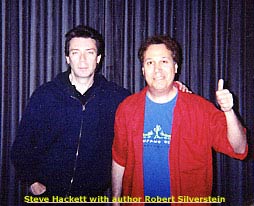
Thanks to Steve Hackett and www.stevehackett.com,
Billy Budis, Camino Records at www.camino.co.uk
- Bret at Chipster Entertainment at www.chipsterpr.com
- Bob Snyder and Jim Pitulski at IOMA Records at www.insideoutmusic.com
- This article originally appeared as the cover story / article of the
August 2002 issue of 20th Century Guitar magazine. Photos
of Steve Hackett at B.B. Kings courtesy Richard Cervone






|
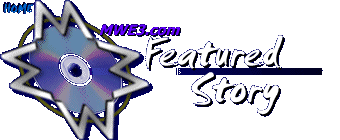
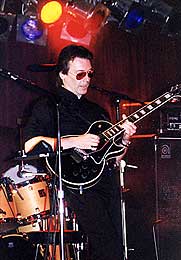
 SH:
It’s a fairly haunted kind of record that one. Certain things that
I felt I couldn’t quite get out of my system. My schooling, my
early experiences with my first love, first time I fell in love with
a girl who later became heavily involved with drugs. I got to thinking
about both these things and I found that, alot of the time I would be
casting around for ideas for songs, looking in books, looking in the
newspaper and trying to come up with glib one-liners and what have you
and trying to stitch a whole bunch of one liners together into a song.
And that’s one way of working. That idea of sampling other phrases
other people said. But then there’s another way of working which
is to look at your own experiences, some of which have been too painful
to include in a song.
SH:
It’s a fairly haunted kind of record that one. Certain things that
I felt I couldn’t quite get out of my system. My schooling, my
early experiences with my first love, first time I fell in love with
a girl who later became heavily involved with drugs. I got to thinking
about both these things and I found that, alot of the time I would be
casting around for ideas for songs, looking in books, looking in the
newspaper and trying to come up with glib one-liners and what have you
and trying to stitch a whole bunch of one liners together into a song.
And that’s one way of working. That idea of sampling other phrases
other people said. But then there’s another way of working which
is to look at your own experiences, some of which have been too painful
to include in a song.








